The Samsung Galaxy A03s is a basic smartphone that’s neither cheap enough nor good enough to warrant your money. It offers decent battery life and it looks pretty good, but performance and camera quality are severely lacking. You can get practically the exact same user experience from Samsung’s older and cheaper Galaxy A02s. If you’re looking to upgrade from the A02s, don’t be duped by the naming convention; the A03s is not a step up.
Pros
- Attractive design
- Strong battery life
Cons
- Agonisingly slow performance
- Unreliable fingerprint scanner
- Poor camera
-
Big Battery5000mAh cell inside makes for good endurance -
Large ScreenThe 6.5-inch display is hefty for the price -
Expandable StorageAdd more storage with the MicroSD card slot
Introduction
The Samsung Galaxy A03s is the followup to one of the cheapest smartphones in the South Korean giant’s range: the Samsung Galaxy A02s.
The A02s was an ordinary handset made extraordinary by its budget price tag. For slightly more money, the A03s adds a fingerprint scanner… but not much else.
You could spend a little less for pretty much the same overall package, or spend a little more for a significantly better one.
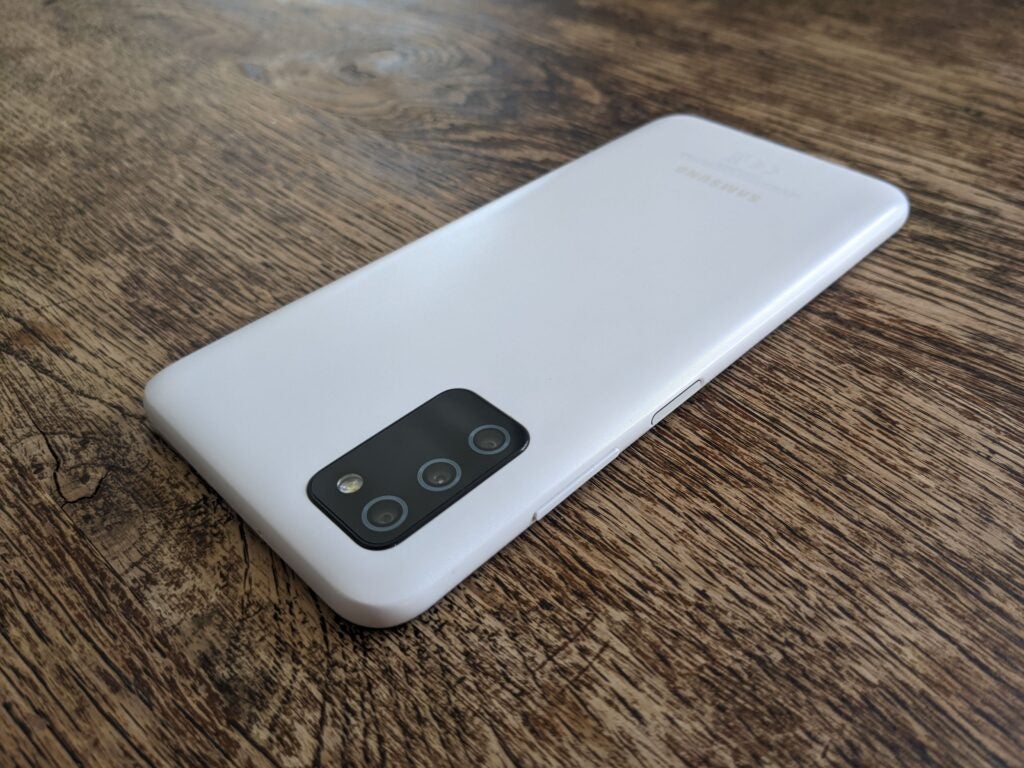
Design and Screen
- Ridged plastic chassis
- 6.5-inch, 1600 x 720 display
- Erratic fingerprint scanner
If it ain’t broke, don’t fix it. The Samsung Galaxy A03s looks almost identical to the A02s, albeit with a more conservative single-tone colour scheme, but that’s no bad thing.
The gently ridged plastic chassis both looks and feels good, and does an excellent job of disguising ugly fingerprints.
The triple array of camera sensors is housed within a dark rectangular module that, crucially for some users, sits almost perfectly flush with the chassis, which means the phone can lie flat on a tabletop.
The power button is positioned beside the volume keys along the phone’s right-hand edge, and also functions as a fingerprint scanner. However, it’s extremely unreliable, to the extent that I’d given up on it altogether within a matter of days.
Seeing as the fingerprint scanner is the main feature that differentiates the Galaxy A03s from the A02s, and adds £20 to the price, this doesn’t bode well. There’s a face unlock function, too, which relies on the selfie camera; but it’s just as unreliable as the fingerprint scanner.
To avoid an immense sense of frustration every time you try to unlock the A03s, you’ll be best foregoing the biometrics altogether and using a PIN or pattern instead.
The Galaxy A03s uses the same 6.5-inch, 1600 x 720 PLS LCD panel as its predecessor. It has an aspect ratio of 20:9 and a pixel density of 270ppi, and it’s large and sharp enough to meet most people’s needs. Maximum brightness, again, is an issue in direct sunlight.
The display is surrounded by a fairly substantial bezel, which incorporates the selfie camera in a teardrop-style notch at the top of the screen.
The inclusion of a headphone jack will please some prospective buyers, as will the support for dual SIM cards. The MicroSD card slot is an excellent addition. A downwards-firing mono speaker can be found sitting beside the USB-C charging port along the phone’s bottom edge.
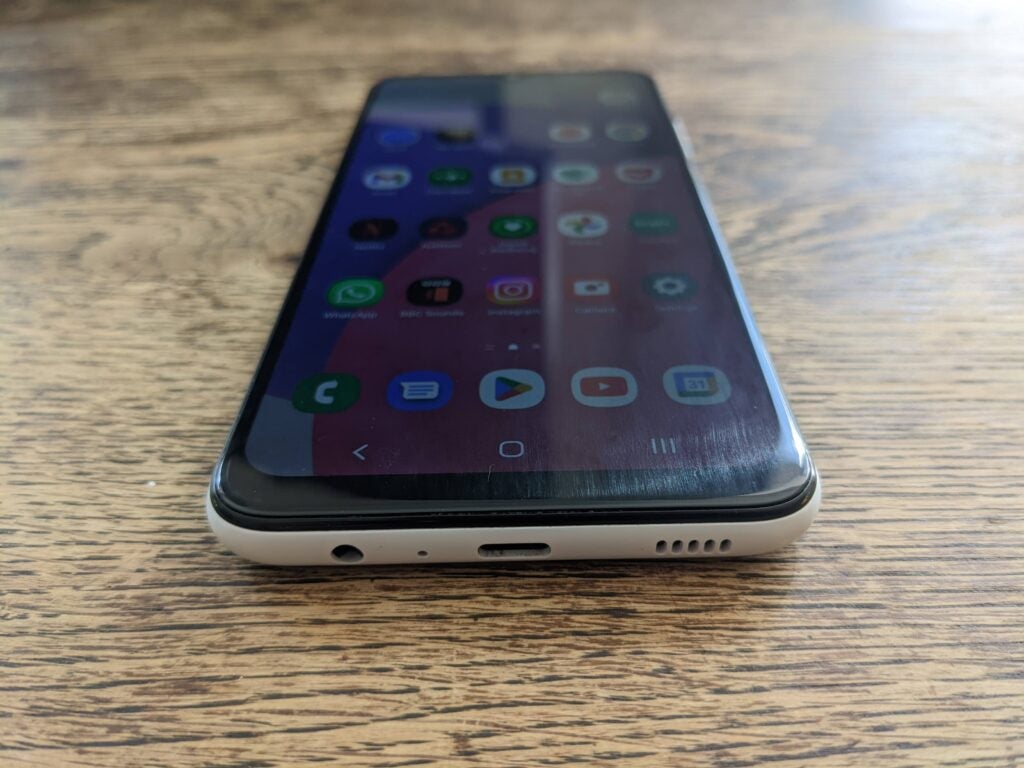
Camera
- Triple rear cameras
- 13-megapixel main camera
- No Night mode
The Galaxy A03s has a triple rear camera setup that’s underpinned by a 13-megapixel main sensor. A 2-megapixel macro lens and a 2-megapixel depth sensor complete the set.
If any of that sounds familiar to you, it may be because that’s the exact same camera array that you’ll find on the cheaper A02s.
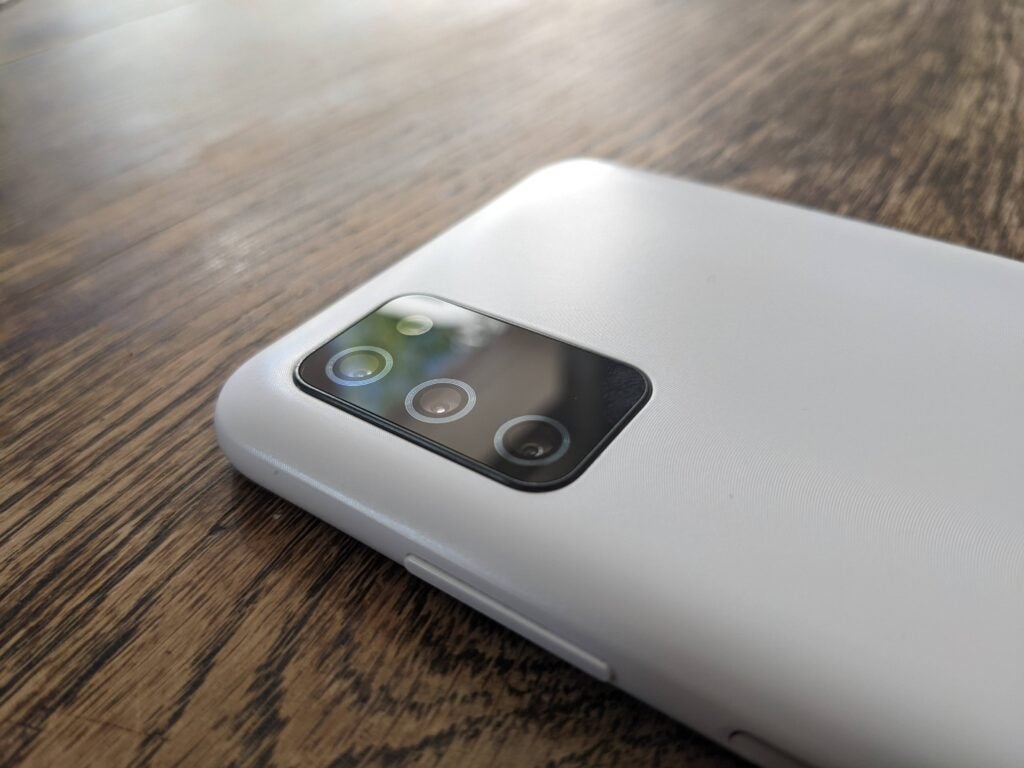
On a £120 phone the results were just about adequate, but you expect better from the slightly pricier Galaxy A03s.
In optimal light conditions this camera can capture photos that look fine on a phone screen, but zoom in even a little and all detail gives way to soft edges and fuzzy, noisy haze.
The HDR is relatively ineffective, allowing some subjects to be lost to the shadows and others to the light, and the lack of a Night mode means that results in low or even middling light conditions are consistently terrible.
Failing to include a Night mode is particularly frustrating, since the Macro mode is neither particularly useful nor impressive.

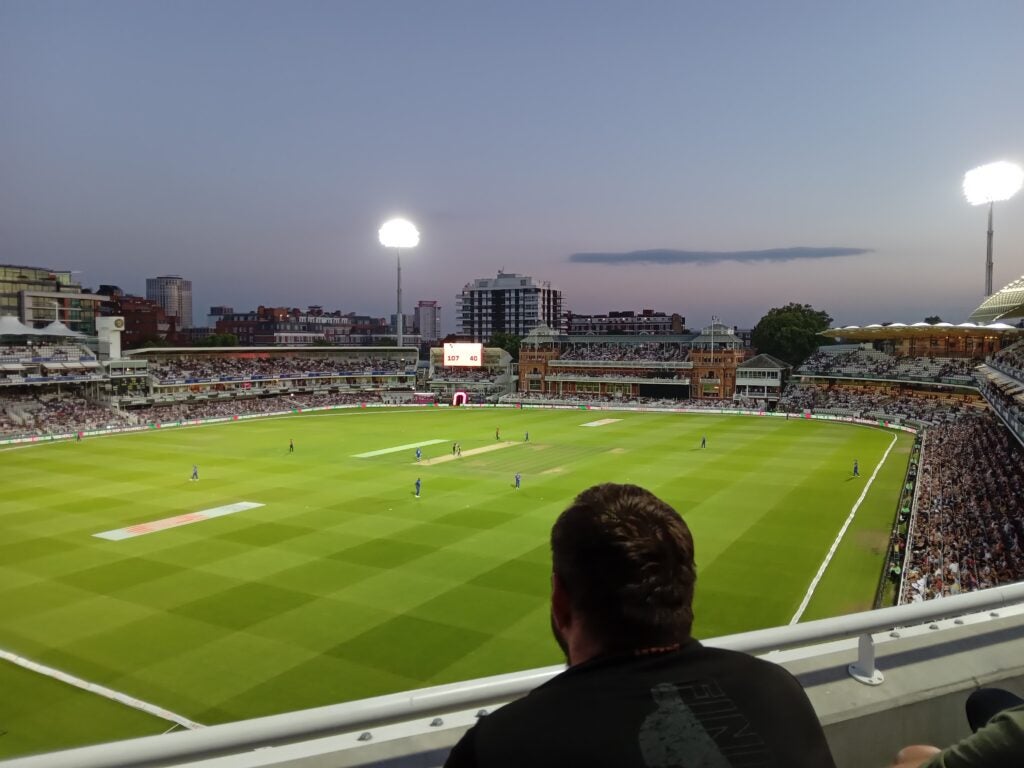
Pro Mode, which lets you drill down into the nuts and bolts of the camera, is a fun addition, as is Portrait mode, which lets you blur the background of pictures to make your subject stand out. Hyperlapse provides an easy way to shoot time-lapse videos. But each of those positives come burdened with one big caveat: photos taken with the Galaxy A03s are sub-par.
What’s more, I’d gladly sacrifice Pro mode, Portrait mode, Hyperlapse and Macro mode for Night mode and HDR that actually works.


There’s also no image stabilisation for filming, and the selfie camera relies on a basic 5-megapixel sensor.
As with the A02s, it feels as if Samsung has equipped the Galaxy A03s with a triple camera not because it actually works well, but because it looks like it should work well.



Performance
- MediaTek Helio P35 chip
- 3GB of RAM
- Android 12 with Samsung OneUI
I recently described the Samsung Galaxy A12 as the slowest phone I’ve ever used, but the Galaxy A03s gives it a serious run for its money. There’s lag, and then there’s the Galaxy A03s.
It runs on the MediaTek Helio P35 chip. That’s the same hardware that powered the Motorola G8 Power Lite, which was underwhelming back in 2020.
Even the simplest tasks, such as unlocking the Galaxy A03s, opening an app or typing, take a second – perhaps even longer – to register. After that, it’s a matter of waiting a fraction of a second longer for the phone to judder into action.
Common multi-step tasks, such as searching for directions or looking something up on the internet, happen seemingly in slow motion, and having a few apps open at once makes things even worse.
Using the Galaxy A03s is a real chore, even if you expect the bare minimum from it. Anybody who’s grown accustomed to a phone that’s zippy and capable of multi-tasking should steer well clear.
But similar to the A12 and the A02s, which use the Snapdragon 450 processor and are similarly sluggish, the Galaxy A03s handles intensive games surprisingly well.
Asphalt 8 isn’t anywhere near as juddery as you might fear, considering what you’ve just read. It certainly isn’t buttery smooth, but it’s more than acceptable.
Film and TV streaming works without a hitch, although the handset can grow disconcertingly warm within an hour.
The model used for this review is the 3GB version, but the Galaxy A03s is also available with 4GB of RAM.
| Performance | Score |
| Geekbench 5 single core | 173 |
| Geekbench 5 multi core | 849 |
| 3DMark (Sling Shot Extreme) | 426 |
| 3DMark (Wild Life) | Phone doesn’t support test |
| 3DMark (Sling Shot) | 762 |
| 3DMark (Wild Life Stress Test) | Phone doesn’t support test |
The Galaxy A03s has received the Android 12 software upgrade, which runs under Samsung’s own OneUI skin. It’s a relatively inoffensive skin, but it forces you to install several apps that you may or may not have any use for, such as TikTok and the Samsung internet browser.
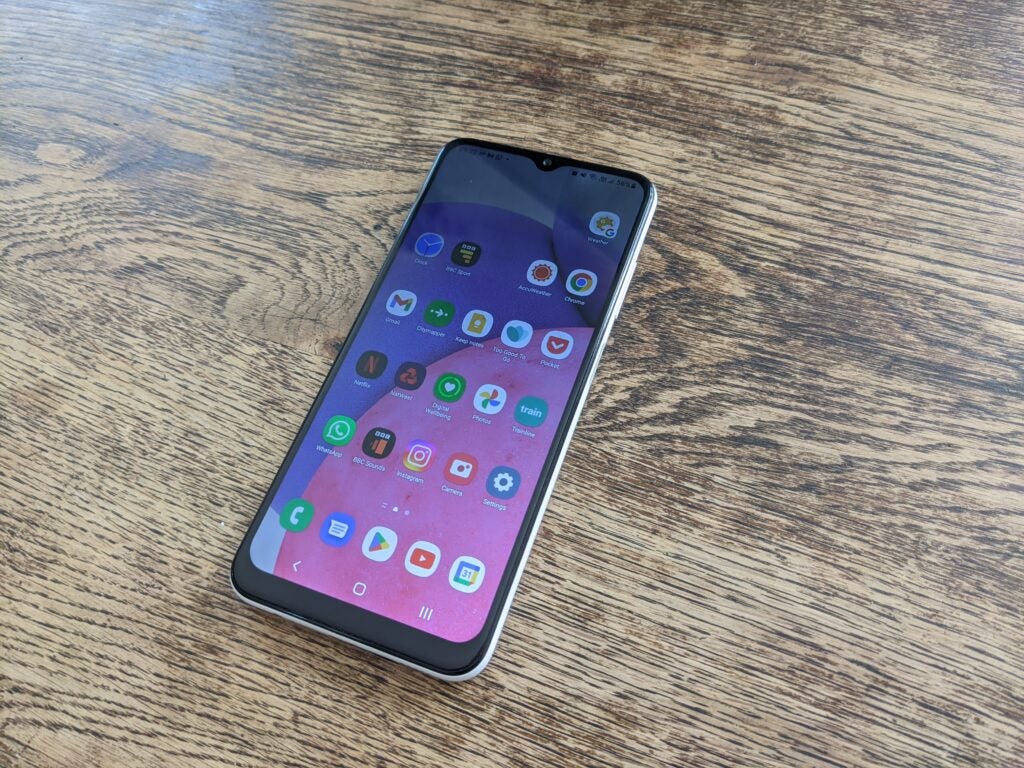
Battery Life
- 5000mAh battery
- Phone can last two days
- Slow to charge
Battery life is the one area in which the Galaxy A03s shines. It can easily keep going for over a day, sometimes two, from a full charge – although powering it back up again is a painstaking process.
Sadly, the Galaxy A03s wasn’t able to run the 3DMark Wild Life Stress Test, which is one of TR’s bread-and-butter battery life benchmarks, but real-life use yielded strong results.
An hour of streaming Netflix consumed 13% of the Galaxy A03s’ battery life; half an hour of intensive gaming (Asphalt 8) used a further 7%, and half an hour of light gaming (Threes) used another 2%.
An hour of online music streaming knocked 5% off its battery, while an hour of playing downloaded music used up a further 4%.
But there’s a downside to the 5000mAh battery. Charging the Galaxy A03s back up again requires serious patience, especially since the phone doesn’t have fast-charging functionality. It took 1hr 45mins to get the phone from 0% to 50%, and a whopping 4hrs 8mins to complete a full charge.
If you’re ever suddenly caught short, that’s going to be a problem.
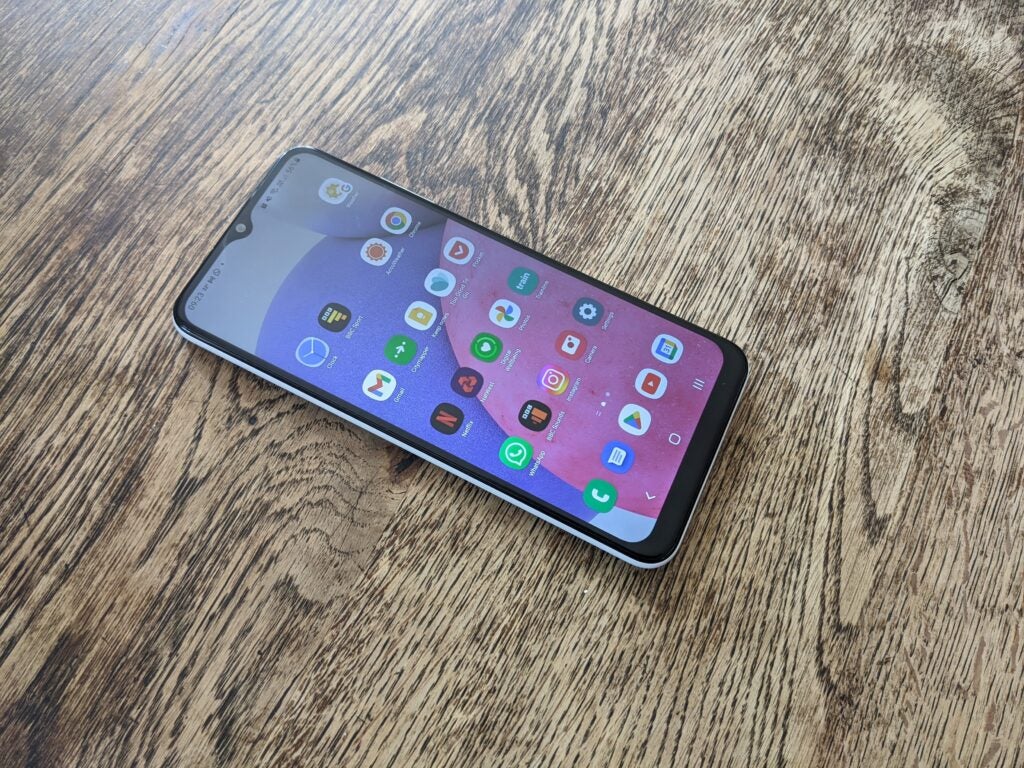
Should you buy it?
Low price: A cheap, good-looking phone with excellent battery life
Performance: Below-par camera and agonisingly slow performance
Final Thoughts
The Samsung Galaxy A03s raises two questions. How cheap is cheap? And how slow is too slow? The A03s is too slow and not as cheap as it should be, considering the bog-standard camera and sedate performance. Samsung has missed the mark.
The Galaxy A03s is basically a carbon copy of the cheaper A02s. And there are much better phones out there for anyone who can afford to stump up a little bit more cash. The Motorola Moto G8 costs less than £200 and offers a much better camera and overall user experience, while at £179, the Motorola Moto 8 is only a smidgen more expensive than the Galaxy A03s, but a far better handset overall.
FAQs
Yes, Samsung provides a charger with this phone.
Sustainability
TrustedReviews’ holds the fact that global warming is not a myth as a core value and will continuously endeavor to help protect our planet from harm in its business practices.
As part of this mission, whenever we review a product we send the company a series of questions to help us gauge and make transparent the impact the device has on the environment.
We currently haven’t received answers to the questions on this product, but will update this page the moment we do. You can see a detailed breakdown of the questions we ask and why in our sustainability info page.
Jargon buster
USB-C
The modern USB connector you’ll find on most Android phones, new laptops, cameras and games consoles. It’s reversible and used for charging along with data-transfer.
HDR
HDR stands for High Dynamic Range and refers to contrast (or difference) between the brightest and darkest parts of an image. HDR content preserves details in the darkest and brightest areas of a picture, details that are often lost in old imaging standards. HDR10 is mandated to be included on all HDR TVs. It’s also supported by 4K projectors.
5G
Offering faster download and upload speeds when compared to 4G. Great for game streaming and HDR video playback. Not supported everywhere yet and speeds vary wildly.
















